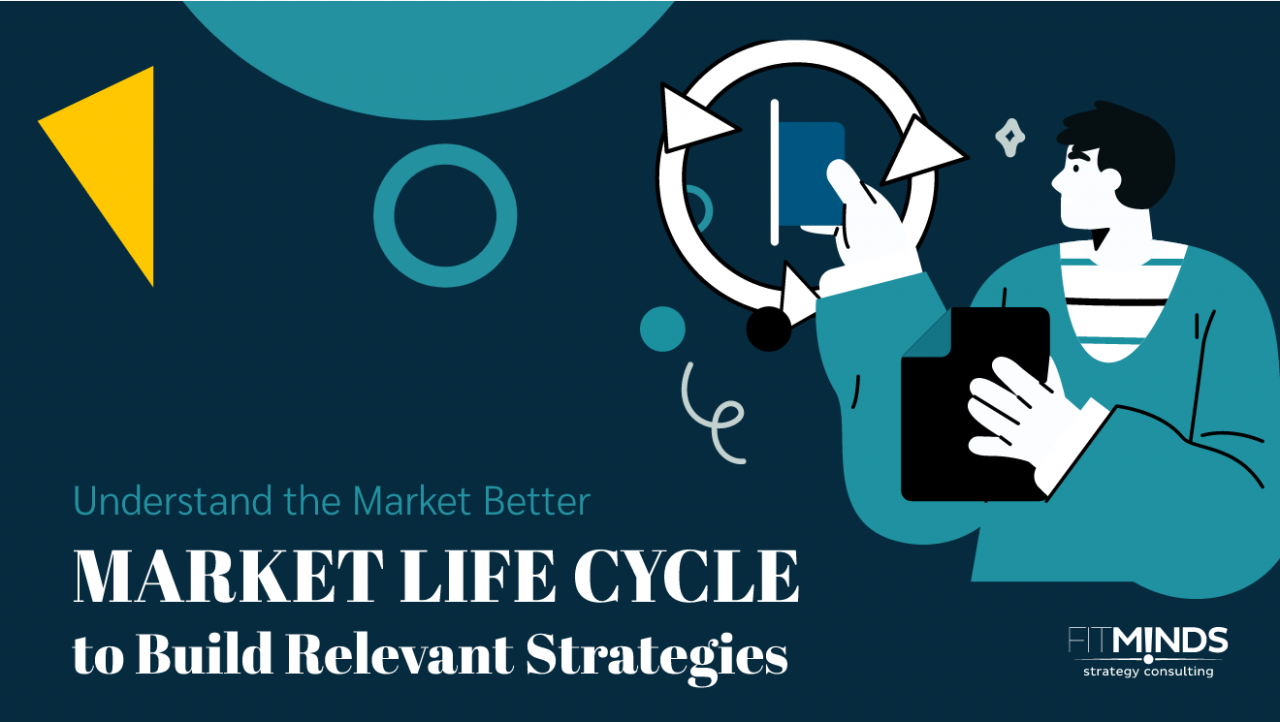The Market Life Cycle (MLC) is the time horizon for a market/industry/category from its appearance to the disappearance. MLC consists of 4 phases – introduction, growth, maturity, and decline. Market dynamics are different in each phase, and each phase necessitates different strategies. Therefore, businesses have two critical tasks:
- To determine the current phase of the market,
- To shape their strategies accordingly.

1) Introduction
Characteristics:
The introduction phase of a market starts with the development of the first product/service of that market. Since this first product originates the new category, information on the product(s) and the new market is limited. Demand tends to be uncertain. Revenues are low. Businesses tend to be unprofitable as they spend more on market development and demand generation.
The duration of the introduction period depends on the below factors:
- The severity of the need that the new category is addressing
- Prospects’ sense of urgency about meeting their needs
- The complexity of the products / Time to communicate properly with the majority of the prospects
- Power of competitors/alternatives/substitutes
After the market gains a desired initial position, the growth period begins.
Possible strategies:
The primary goal of the introduction phase is to keep it as short as possible to proceed to the growth phase as early as possible.
So, you should design your strategies focused on the 4 dynamics mentioned above:
- Fostering severity perception
- Creating a sense of urgency
- Assuring clear positioning and communication
- Building a competitive advantage
2) Growth
Characteristics:
In the growth phase, customers have a clear understanding of the new market. Demand grows rapidly. As the number of customers increases, new competitors within the category start to emerge. Early new products expand the market. However, after a certain threshold, although the market still continues to grow, an increase in competitive intensity leads to the price decline, at least for some of the products.
The length of the growth period depends on several factors such as:
- Continuity of demand
- Penetration pace of the market through new geographies, segments, etc.
- The innovation capability of the players
- The innovation capability of the substitutes/alternatives
- The emergence of new alternative markets
Spread price declines coupled with saturation in demand move the market to maturity.
Possible strategies:
The primary goal of the players in the growth phase is to increase customer share. An increase in customer share may be accompanied by an increase in market share or revenue or profit. However, the focus must be on expanding the customer base faster than your competitors. After a great customer acquisition performance, you will have the opportunity to increase your revenue on a much larger scale compared to your competitors.
An important mark for the market leader: With a dominant position in the market, a market leader must focus on growing the market rather than stucking in customer share competition. By doing so, it will get the biggest portion of the new customers. On the other hand, there are two points that you must be aware of if you are the leader:
- You must respond to all important competitive moves, as stated by Jack Trout and Al Reis in the Marketing Warfare book.
- You must be clear about when to shift its marketing strategies from growing market to claiming leadership.
3) Maturity
Characteristics:
In maturity, growth slows down and converges to the population growth rate. Differences between products become negligible. The breadth of market share transfer shrinks. “Defense” is the new approach, now. Competitive efforts become more efficient. Price war gets intense. Businesses want to reduce their expenses. Consolidations occur.
The duration of the maturity period depends on several factors:
- Continuity of the need
- The intensity of price war
- New technologies, features, and innovations in the category
- The innovation capability of the substitutes/alternatives
- The emergence of new alternative markets
With alternative categories getting more popular, customers start to go out of the market, and the decline starts.
Possible strategies:
The main focus of the maturity phase is to defend the profit level. Keeping in mind the profit formula,
Profit = Revenue – Costs
Revenue = Price x Volume
Costs = Cogs + Other costs
You should focus first on sustaining your price level if you are not the cost leader. To defend your price, you can improve your product’s features or support it with services.
If your product’s price is eroding, you should start to decrease costs to keep your business profitability at a desirable level.
4) Decline
Characteristics:
During the decline phase, demand, and sales decline. Marketing expenditure is minimal. The target audience is simplified. Prices tend to fall. Although the transition phase from growth to maturity is the most desirable part of the MLC, the decline is inevitable for most of the markets.
This phase can be postponed with large-scale product improvements or adapting for use for a different purpose but these just lead to extend the same process.
The duration of the maturity period is generally determined by players’ capability to survive profitably in the market. Businesses with customer retention costs exceeding the unit profit exit the market as soon as possible.
Possible strategies:
In decline, you have to focus on surviving profitably. If you cannot, an exit will be the best strategy.
Conclusion
Every market has a life cycle. Each phase of this cycle has different characteristics. You have to adapt your strategy in alignment with the characteristics of the market that you are in. Therefore, it is vital for success to assess the MLC phase of the market and tailor your strategy.
Contact us to determine the current stage of your industry and adjust your strategies accordingly.




13 comments
Pingback: comment obtenir gratuitement kamagra
Pingback: cheapest buy enclomiphene how to purchase viagra
Pingback: discount androxal generic how effective
Pingback: buy flexeril cyclobenzaprine generic efficacy
Pingback: get dutasteride generic uae
Pingback: buy fildena purchase australia
Pingback: purchase gabapentin canada drugs
Pingback: get itraconazole buy hong kong
Pingback: generic staxyn from canada
Pingback: how to buy avodart singapore where to buy
Pingback: purchase xifaxan generic for sale
Pingback: buy cheap rifaximin generic canada
Pingback: cena za kamagra
Comments are closed.